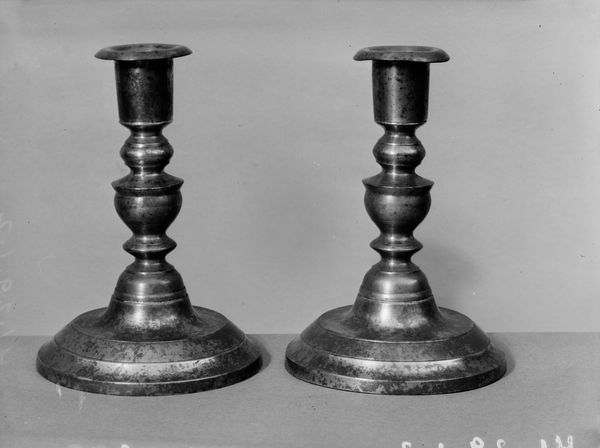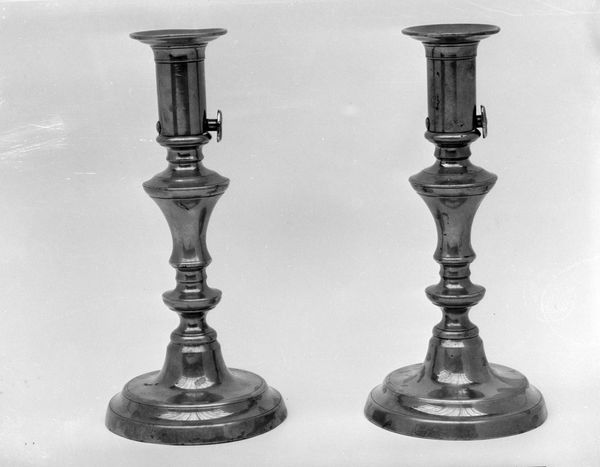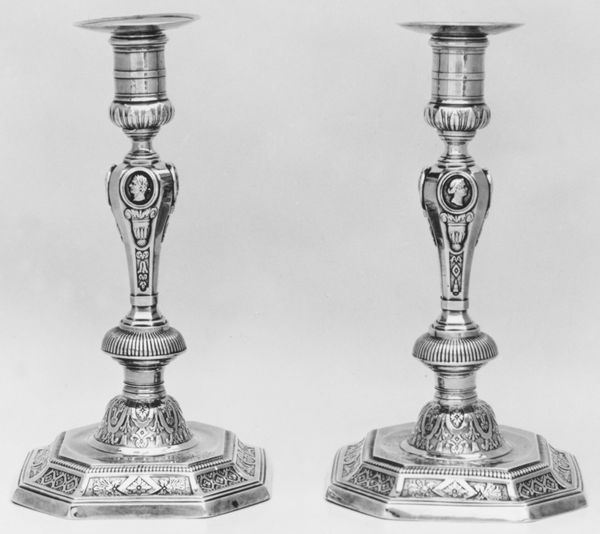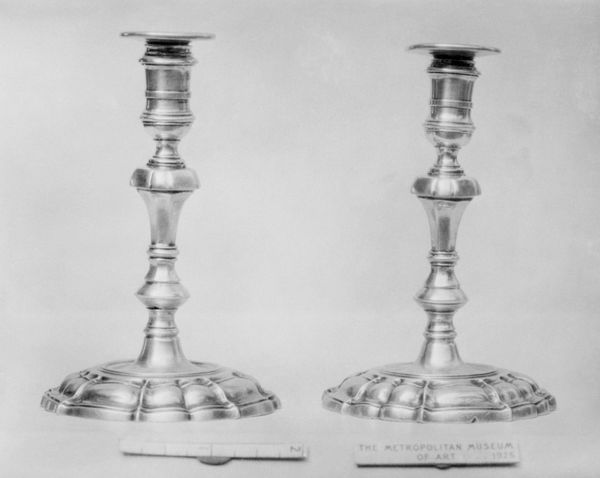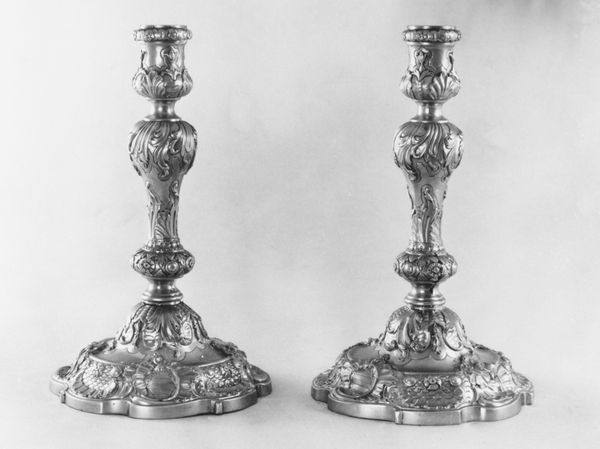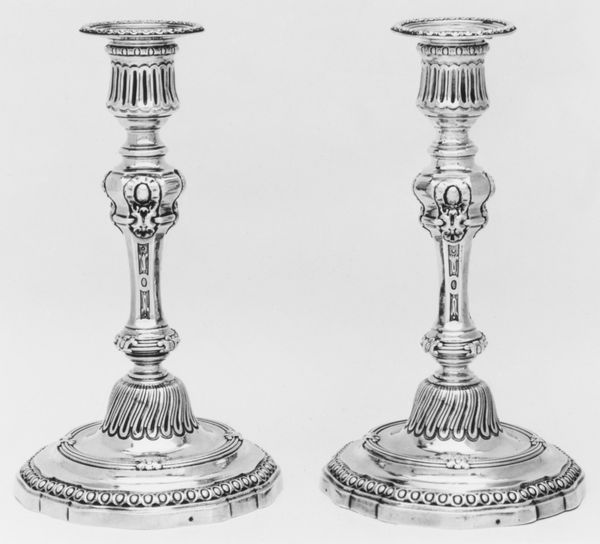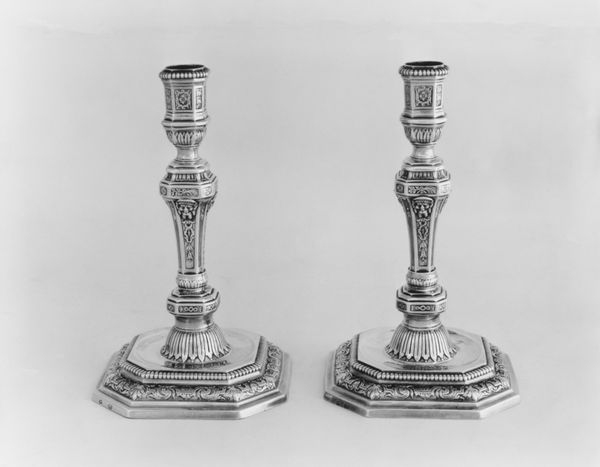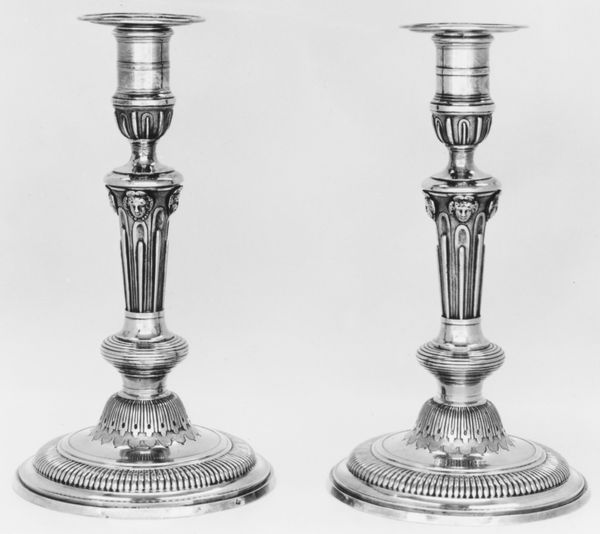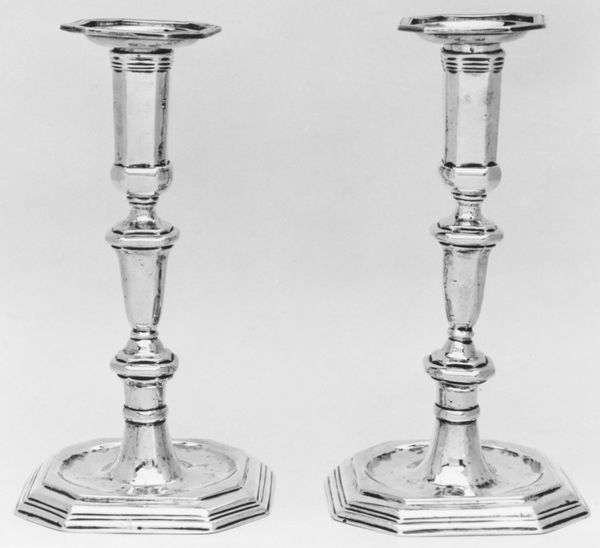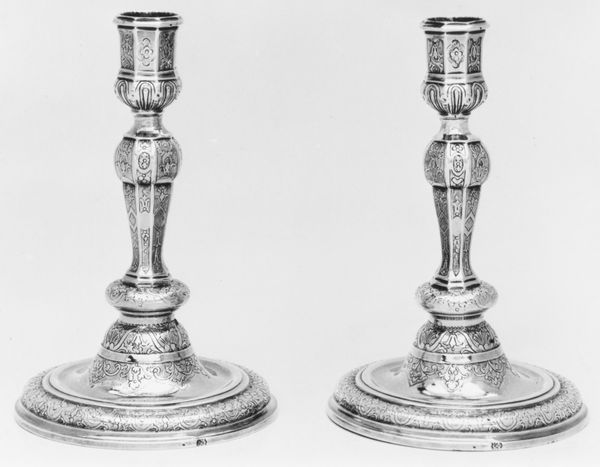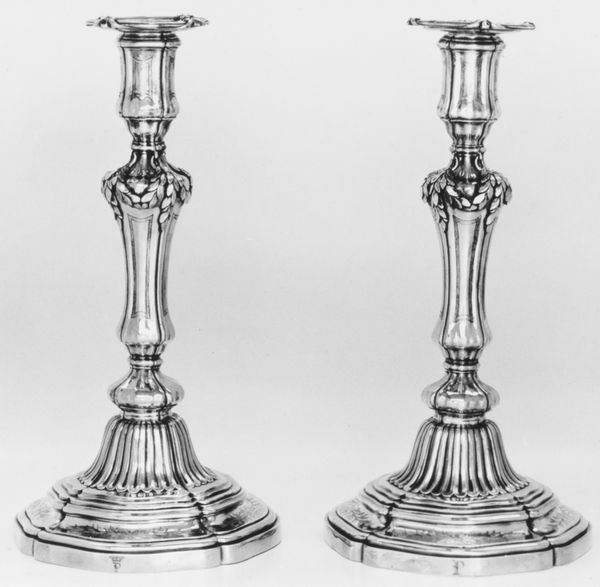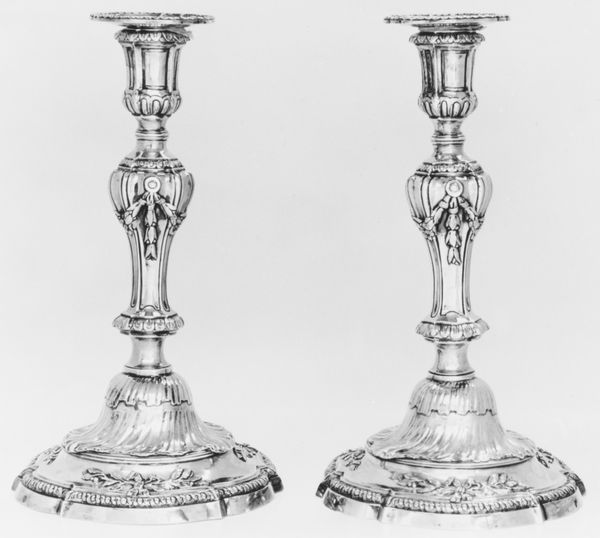
metal, sculpture
#
baroque
#
metal
#
sculpture
#
sculpture
#
decorative-art
Dimensions: H. 7 5/8 in. (19.4 cm)
Copyright: Public Domain
Curator: Just looking at these Candlesticks crafted between 1750 and 1760, currently residing at the Metropolitan Museum of Art in New York, I’m struck by a sort of hushed elegance. They whisper, rather than shout. Editor: That’s a beautiful way to put it. To me, they immediately conjure the Baroque period, with its emphasis on elaborate ornamentation, evident in the complex shapes, almost geometric in a sense, especially in the central parts, rising towards the top where the light will reside. The reflective materiality further highlights the piece's inherent visual drama. Curator: Absolutely. The metalwork—the cool gleam—feels like moonlight solidified. There’s something deeply spiritual suggested, perhaps not overtly religious, but connected to ritual, to creating a certain ambiance, wouldn't you say? I imagine them placed in a darkened room, flickering light playing off their surfaces... what tales they could tell. Editor: Their materiality, the way they engage with light and shadow, can be read through the lens of semiotics; light becomes the signifier of illumination and knowledge, a visual manifestation of a broader philosophical quest. Note the intentional geometric interruptions and undulations designed to create contrast as light washes around them. Curator: Which brings up this interesting play between form and function. They serve a utilitarian purpose—holding candles—but are elevated to this level of artistry, a symbolic representation beyond simple necessity. Do you see a kind of intentional human tension? The want of beauty, or divinity, when things simply can serve? I feel these are built, molded objects to take their intended user outside themselves...if that makes any sense at all? Editor: I think what you're sensing is that these pieces, and objects like them, become emblematic of humanity's striving for something more—using form and visual rhetoric in material expressions that go far beyond pragmatism. Ultimately, each candlestick acts as a singular moment for interpreting the philosophical intent of the cultural and material world from which it springs. Curator: Looking at these pieces—simple items made beautiful, even...necessary!—is something, in and of itself. And it does reveal something, doesn't it, about ourselves? Editor: Indeed; and perhaps most telling is how the intrinsic qualities of the candlestick forms inspire so many unique and distinct narratives.
Comments
No comments
Be the first to comment and join the conversation on the ultimate creative platform.
